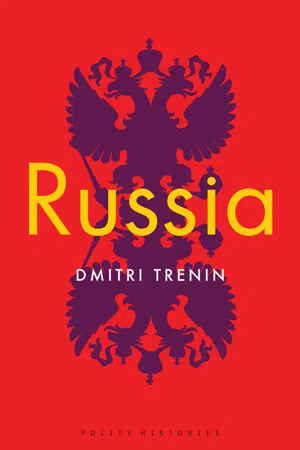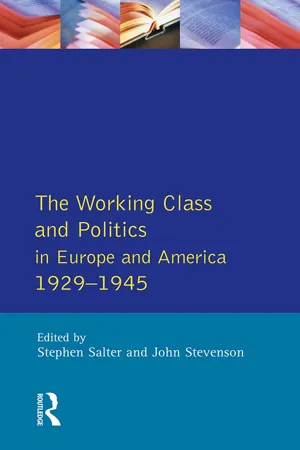History
Soviet Union
The Soviet Union was a socialist state that existed from 1922 to 1991, encompassing a vast territory in Eastern Europe and Asia. It was founded after the Russian Revolution and was characterized by a centralized government, state ownership of the economy, and a one-party system dominated by the Communist Party. The Soviet Union played a major role in shaping global politics and was a key player in the Cold War.
Written by Perlego with AI-assistance
Related key terms
Related key terms
1 of 4
Related key terms
1 of 3
4 Key excerpts on "Soviet Union"
- Lenin’s goal was not so much to give respite to the war-weary population as to shore up the political system. This system was officially called Soviet, but in reality this was a Communist Party dictatorship disguised as working-class rule. The official name of the state was part of an exercise in political window-dressing. The soviets – from local councils to the All-Russian Congress of Soviets and its, in theory, all-powerful Executive Committee – were a superficial decoration. The actual rulers of the land sat on the Central Committee of the Communist Party and controlled its increasingly powerful apparatus. The Central Committee appointed party members to serve as chairmen and secretaries of the soviets at different levels and essentially dictated policy to them.Having won the Civil War and embarked on socialist transformation, the Bolsheviks did not stop fighting against political enemies, real or imagined, and would-be opponents. They believed that their enemies would never accept defeat. The apparatus of the secret political police, initially nicknamed the Chekah, now officially called the OGPU, expanded greatly and covered the entire country. During the 1920s, 600,000 people were condemned for “counter-revolutionary crimes.” From 1928, a long series of public trials started to terrorize the country. By 1930, the newly created administration of concentration camps, the so-called GULAG, housed 150,000 prisoners. Solovki, an island monastery in the White Sea that was turned into a huge prison, became an early symbol of growing repression. Creating a new humanity, it seemed, meant eliminating many of those who did not or would not fit in.1
The Founding of the Soviet Union
The triumphant Communist Party also set about consolidating its rule across much of the territory of the former Russian Empire. By 1922, there existed four nominally independent Soviet republics: the Russian Federation (which at that time also included Central Asia), Ukraine, Belarus, and the Transcaucasus Federation of Armenia, Azerbaijan, and Georgia. In reality, however, the ruling Communist parties of Ukraine, Belarus, and Transcaucasus were but branches of the Russian Communist Party. During the Civil War, the Communist-dominated entities formed a military, diplomatic, and financial union. Now the time had come to unify them in a single state. The issue was what kind of a state: a unitary or a federal one? - Stephen Salter, John Stevenson(Authors)
- 2014(Publication Date)
- Routledge(Publisher)
CHAPTER TEN The Soviet UnionHiroaki KuromiyaINTRODUCTION
The Soviet working class experienced the turbulent decade and a half from 1929 to 1945 in a political environment significantly different from that in other European countries. The country was governed by the Communist Party in the name of the proletariat, the first ‘proletarian dictatorship’ in world history. Historians disagree sharply over whether these years, so intimately associated with Stalin’s dictatorship, indeed fulfilled the October Revolution or on the contrary betrayed it.1 This disagreement notwithstanding, it is clear that, in contrast with Western countries enduring the agonies of mass unemployment, the Soviet Union eliminated mass urban unemployment through vast economic transformations: the size of the working class grew almost continuously, trebling from 6.8 m. in 1928 to 20 m. in 1940.2 This growth was hailed as a great achievement in the country of proletarian dictatorship, which in 1928 was still an overwhelmingly agrarian society, with over 80 per cent of the population of 150 m. engaged in the agricultural sector. Not only did Stalin’s rapid industrialization swell the ranks of workers, but it also provided them with an unprecedented degree of upward mobility.3 Like its other European counterparts during the Depression, however, the Soviet working class was economically severely squeezed by the state: its living standards almost halved between 1928 and 1932, and were to recover to the level of 1928 only during the 1950s.4 Administrative controls over labour were continuously tightened.5- eBook - ePub
- I. Wallace(Author)
- 2002(Publication Date)
- Routledge(Publisher)
A state-socialist economy of the Soviet variety came to be characterized by:Not until a decade after the revolution did the distinguishing characteristics of the Soviet economic system take shape. The novel challenges of establishing a workable socialist society against a background of international conflict, civil war, and the problems of adjusting to the loss of territory which had contained a disproportionate share of pre-1914 manufacturing capacity involved much initial pragmatism (Nove 1969). By the mid-1920s, however, the fundamental considerations governing the Soviet Union’s development ambitions were clear, and so was the nature of the difficulties which the communist regime would encounter. The solutions adopted under Stalin achieved ‘success’, but at a high price to the individuals who perished in the process and to subsequent national development because of the structural inflexibility of the economic system which he bequeathed.- state ownership of the means of production, in which context the treatment of agricultural land has given rise to the greatest problems;
- command economy, in which directive planning replaces market mechanisms as the basis for allocating resources and specifying outputs;
- centralized control, so that all major decisions are made by State agencies in the capital and filtered down through a myriad of hierarchical channels to workplaces throughout the country.
Within this form of economic organization, political and economic decision-making are much more closely intertwined than they are in non-communist states. In the absence of market signals, price levels in different sectors of the economy can be set to further politically desirable objectives, and investment can be channelled to reflect the regime’s priorities rather than those dictated by comparative profitability in a market economy.If the principal objective is ‘to build communism’ by developing the country’s productive forces along socialist lines, then the central organs of administration are theoretically in a position to harness the entire economic system to achieve this desired end. In practice, one of the greatest problems of a centralized, state-socialist economy is the difficulty of translating a directive plan for the economy as a whole, or some sector of it, into a workable operational plan to guide the daily activity of individual production establishments. Marx regarded the decentralized and uncoordinated planning of capitalist enterprises as anarchic, but he never seriously considered the constraints which render a theoretically more rational nationwide plan made by a centralized authority almost impossible to administer without generating counterproductive responses (Nove 1977). - eBook - ePub
A Documentary History of Communism in Russia
From Lenin to Gorbachev
- Robert V. Daniels, Robert V. Daniels(Authors)
- 2001(Publication Date)
- University Press of New England(Publisher)
. . . National economic re-establishment is impossible as long as the Republics remain separated.On the other hand, the instability of the international situation and the danger of new attacks make inevitable the creation of a united front of the Soviet Republics in the presence of capitalistic surroundings.Finally, the very structure of Soviet power, international by nature of class, pushes the masses of workers of the Soviet Republics to unite in one socialist family.All these considerations insistently demand the union of the Soviet Republics into one federated State capable of guaranteeing security against the exterior, economic prosperity internally, and the free national development of peoples.The will of the peoples of the Soviet Republics recently assembled in Congress, where they decided unanimously to form the “Union of Socialist Soviet Republics,” is a sure guarantee that this Union is a free federation of peoples equal in rights, that the right to freely withdraw from the Union is assured to each Republic, that access to the Union is open to all Republics already existing, as well as those that may be born in the future, that the new federal state will be the worthy crowning of the principles laid down as early as October 1917, of the pacific coexistence and fraternal collaboration of peoples, that it will serve as a bulwark against the capitalistic world and mark a new decisive step towards the union of workers of all countries in one World-Wide Socialist Soviet Republic.Part II: Treaty
The Russian Socialist Federated Soviet Republic, the Socialist Soviet Republic of the Ukraine, the Socialist Soviet Republic of White Russia, and the Socialist Soviet Republic of Transcaucasia (including the Socialist Soviet Republic of Azerbaijan, the Socialist Soviet Republic of Georgia, and the Socialist Soviet Republic of Armenia) unite themselves in one federal State—”The Union of Soviet Socialist Republics.” . . .
Index pages curate the most relevant extracts from our library of academic textbooks. They’ve been created using an in-house natural language model (NLM), each adding context and meaning to key research topics.
Explore more topic indexes
Explore more topic indexes
1 of 6
Explore more topic indexes
1 of 4



